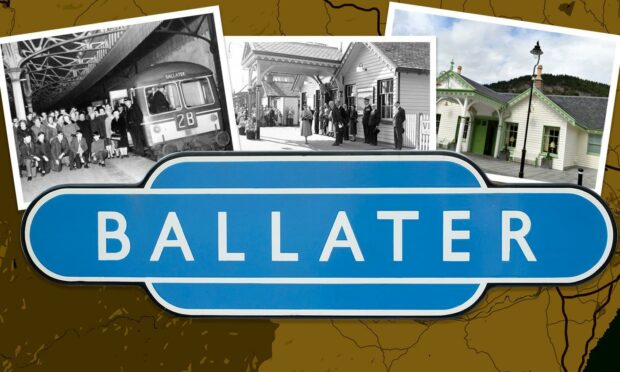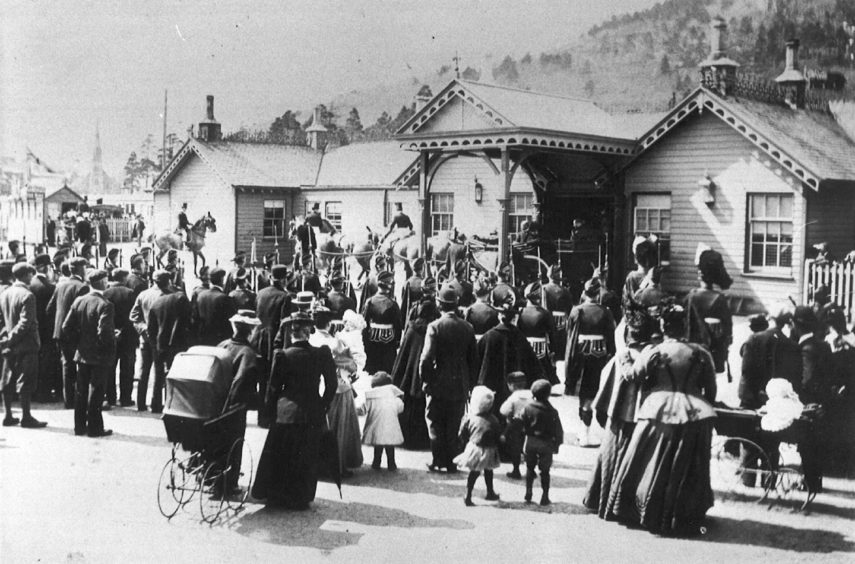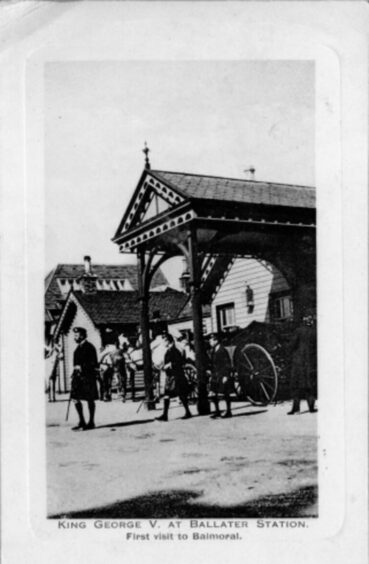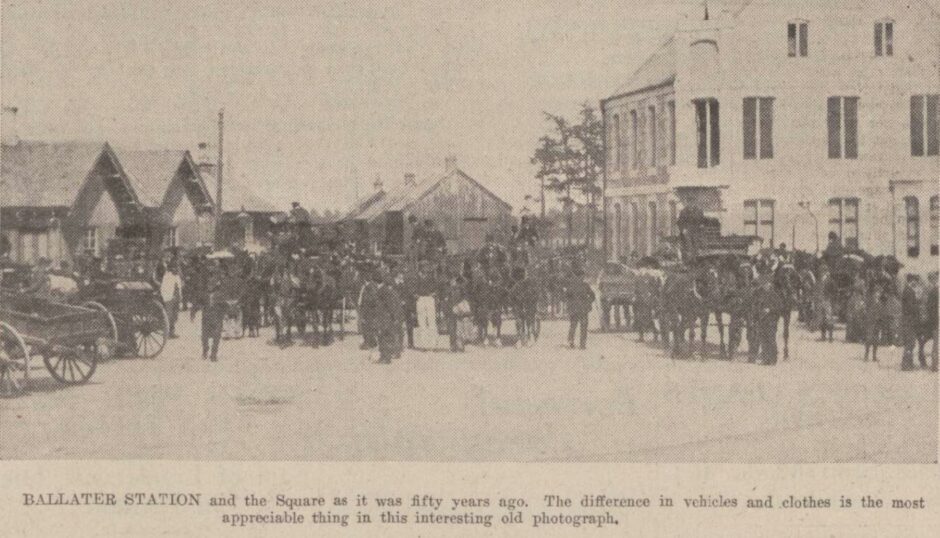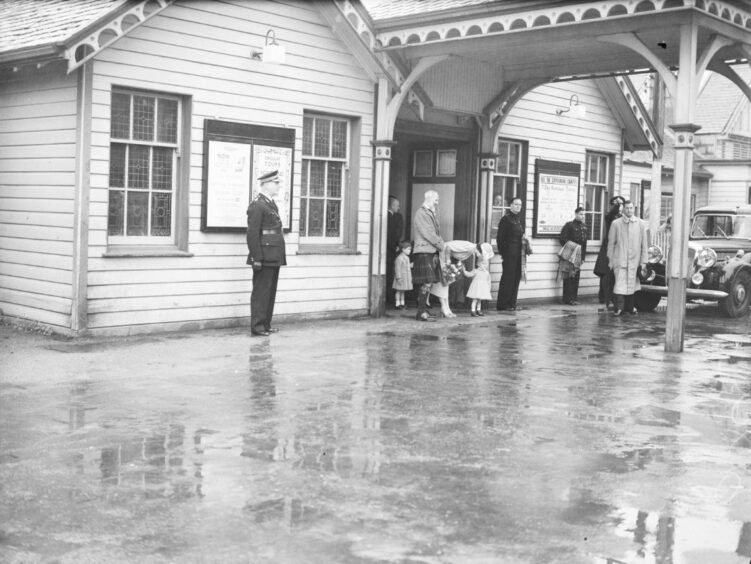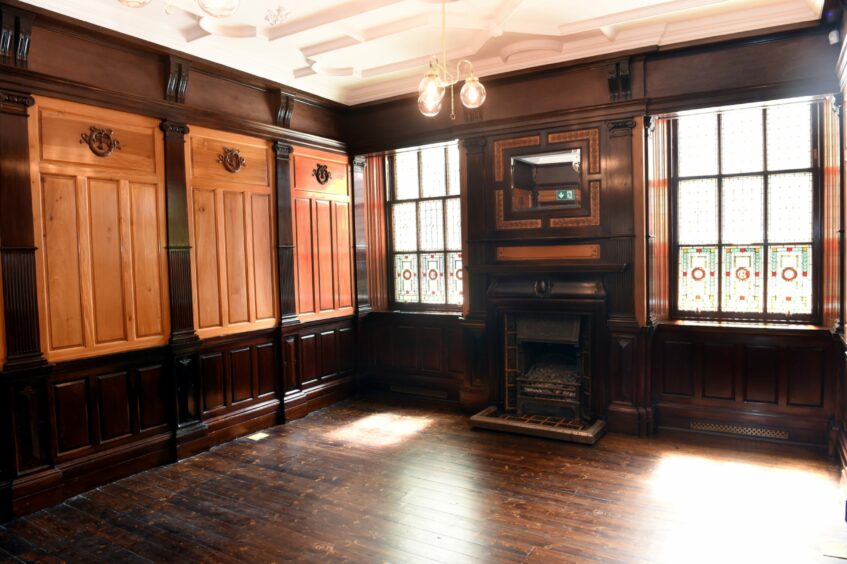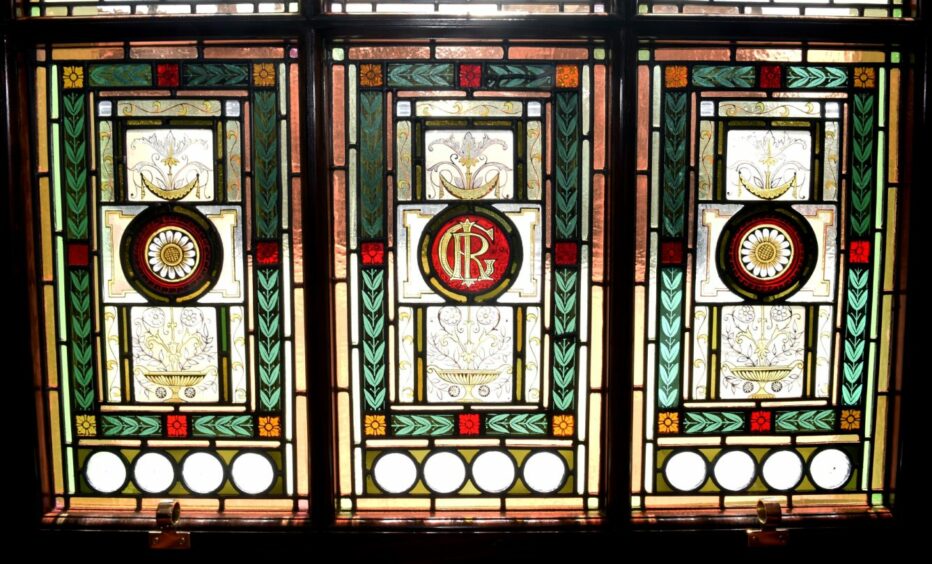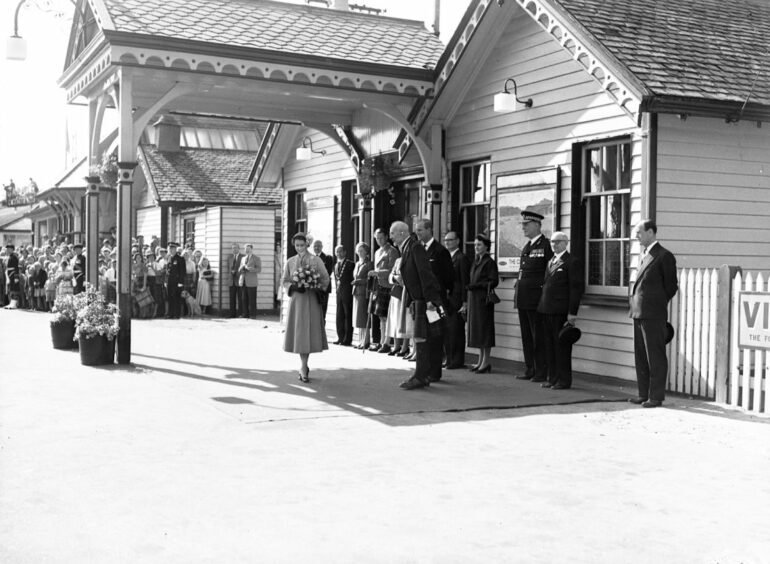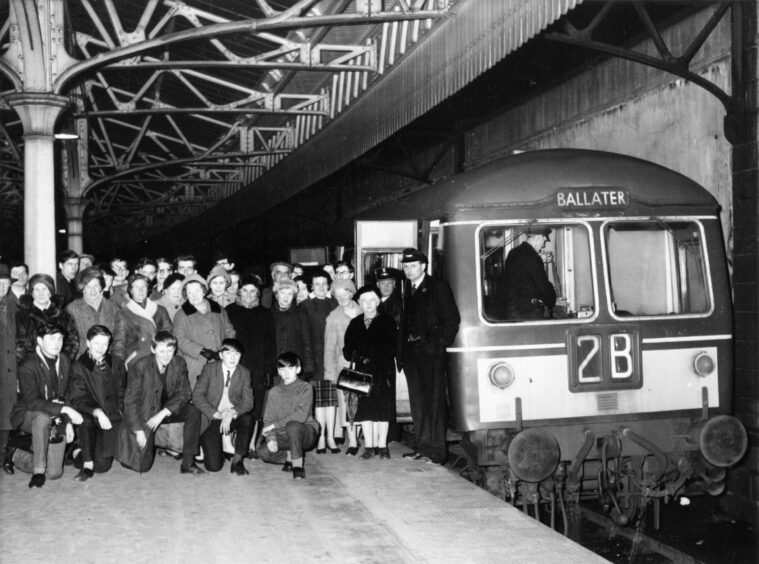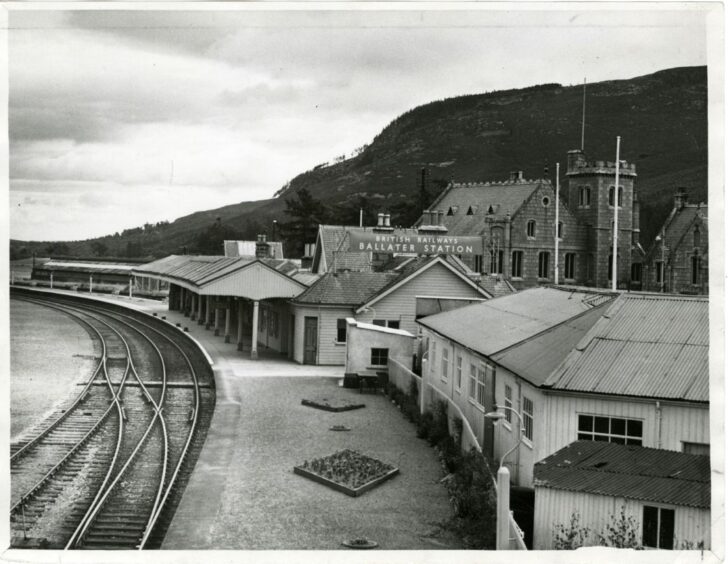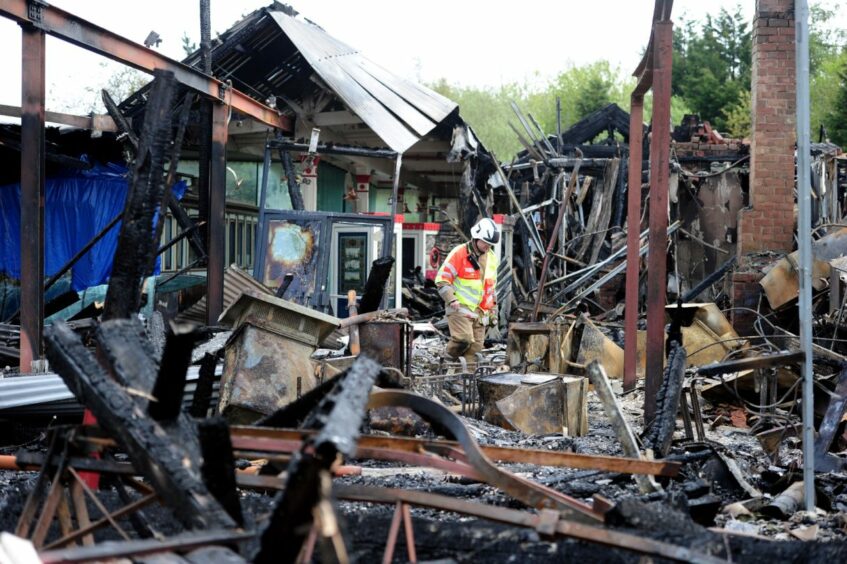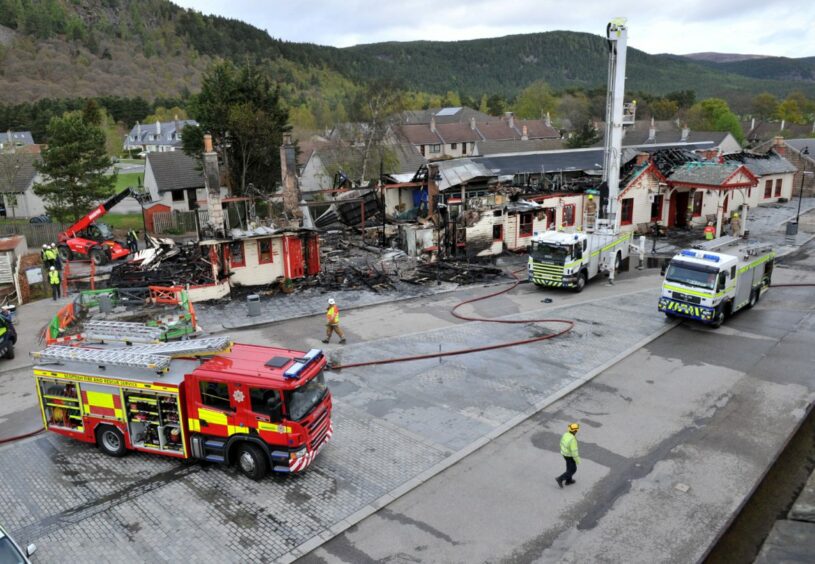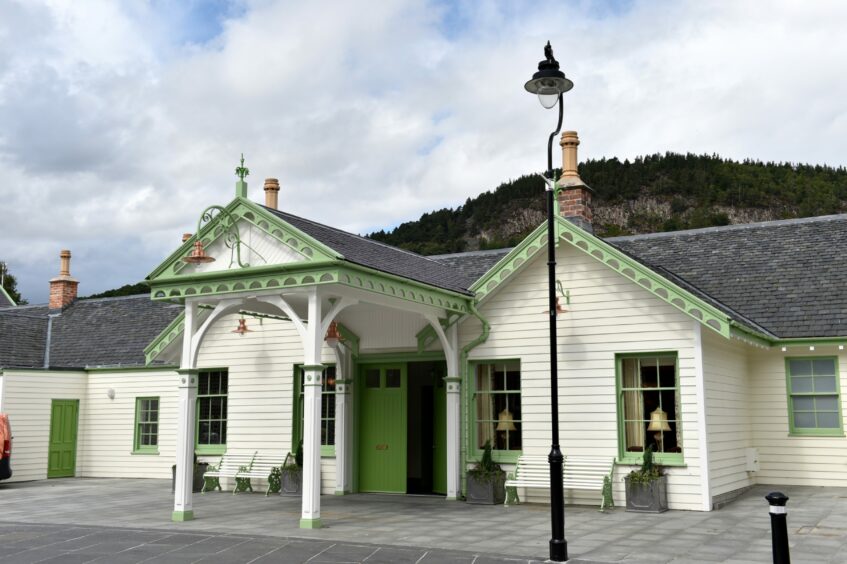A rare opportunity has arisen to reunite an original piece of railway heritage with Ballater Station.
The blue totem sign from the station’s heyday is set to go under the hammer this week at auction.
Ballater Station was the terminus of the Deeside line which linked the city of Aberdeen with the community in the Cairngorms.
But 90% of the Victorian station building was destroyed after a fire in 2015, meaning many of its original fixtures and fittings were lost.
The station in the heart of Ballater was famously frequented by Queen Victoria and subsequent generations of the Royal Family when travelling to Balmoral Castle.
But like many other rural branch lines in the north-east, it was axed as part of Dr Beeching’s cuts in its centenary year.
It is likely the sign, which is being auctioned in England, was removed around this time meaning it has survived in storage.
Arrival of the railway in Ballater
The station was built as part of the Aboyne and Braemar Railway in 1866 as a terminus for its line which connected Aberdeen with towns and villages throughout Royal Deeside.
Plans to build a railway to Braemar were first proposed in 1864, but locals thought the scheme sounded fanciful.
Although not opposed to the idea, sceptics “were not confident the undertaking would be commenced, much less completed”.
There was more than a little surprise when the railway opened less than two years later.
But it was considerably shorter than originally planned due to the objections of a local landowner – none other than Queen Victoria herself.
The Queen thought the line “would interfere with the privacy of Balmoral, if carried on to Braemar”. It was instead terminated just beyond Ballater at Bridge of Gairn.
Engineers were given 18 months and a budget of £50,000 to build the line, but thanks to a mild winter, the feat was completed in just 10 months.
It included “14 or 15 bridges” and “rails of superior quality”, with the sleepers procured from the Ballochbuie Forest on the nearby Invercauld Estate.
Upon opening, it was reported that “besides making the railway communication to Ballater unbroken, and therefore conferring a boon on the general community, Her Majesty will be conveyed without the slightest inconvenience to within seven or eight miles of Balmoral”.
Royal seal of approval
As Ballater Station was not the original intended terminus, a number of improvements were made in 1866 to make it more befitting of its Royal connections.
What was built as a fairly simple, wooden structure was made much grander with the addition of a waiting room for gentlemen and an enlarged station master’s office.
A new kitchen, third-class waiting room and bigger parcel office were built, and the exterior woodwork was repainted with cast iron thistles added to the roof ridges.
But the jewel in the crown was the new Royal waiting room for Queen Victoria and her family.
The room was designed in the style of the “16th-Century English renaissance” with polished yellow pine panelling and polished pilasters of dark wood.
Decorative details included plaster friezes, Tudor ceiling roses, a tapestry wall covering, a thick Persian rug – and the windows featured monograms.
Queen Victoria was reported in the Press and Journal to be “pleased to express her satisfaction” with the improvements.
Over the years, most of Europe’s royalty passed through Ballater Station en route to Balmoral – including Russia’s Tsar Nicholas II in 1896 – and a host of British prime ministers.
And the station was at the centre of a scandal in 1936 when King Edward VIII was meant to open the new Aberdeen Royal Infirmary.
He claimed to be in mourning, but the truth was he was meeting his mistress Wallace Simpson off the train at Ballater instead.
End of the line for Ballater Station
But even its royal status didn’t make Ballater Station immune to the brutal Beeching Report.
On January 31 1966, it was announced that all passenger trains on the Royal Deeside line were to be withdrawn, with services ceasing on February 28.
The closure of the royal line made the front page of the P&J and even made headlines down in England, because it was so synonymous with The Queen.
The final train was jam-packed with railway enthusiasts and wistful locals seeking a trip down memory lane.
Service 2B, the last train to pull out of Aberdeen Joint Station to Deeside, was remarked to be busier than an Aberdeen holiday.
Meanwhile, the queues at Ballater were “unheard of”; the final train to pull out of the burgh had five carriages rather than the usual two and staff quipped “half of Deeside appeared to be on it”.
A huge crowd gave it a send-off and stationmaster Mr Stewart “sent it on its way with a peal from the famous station handbell”.
The bell was 100 years old – as old as the station itself.
It was a particularly poignant journey for Ballater woman Mary Ann Michie – her father had driven the first train on the new line in 1866.
Station rose from the ashes
After the closure of the line, the station sat empty for a number of years before ambitious plans were announced to redevelop the 10-acre site.
In 1975, Ballater Town Council negotiated with British Rail to buy the former station for £42,000 and set about dreaming up proposals to turn it into a community facility.
Initially plans mooted included demolishing the building to make way for a leisure centre, hotel, craft village and shops.
But British Rail was anxious the “priceless examples” of Victorian heritage – including Queen Victoria’s toilet seat – were preserved for posterity.
The multi-million-pound plans fell by the wayside and the station was later turned into a visitor centre with a replica of the royal carriage.
But disaster struck on May 12 2015 when an electrical fault sparked a devastating inferno at the Old Royal Station.
More than 50 firefighters tackled the blaze at its height and much of the old building was destroyed.
Feared lost forever, Aberdeenshire Council embarked on the seemingly impossible task of bringing the historic building back from the brink.
The restored station reopened in 2018, meticulously rebuilt, and has since won heritage awards.
And now the station’s original totem sign will be going under the hammer at a specialist railwayana auction on November 12 along with the original signs from the former stations at Aviemore, Falkirk, Insch, Kittybrewster, Kingussie and Montrose.
With a starting price of £2000, perhaps someone with deep pockets will fork out to buy the sign and have it returned to its rightful home in Deeside.
If you enjoyed this, you might like:
